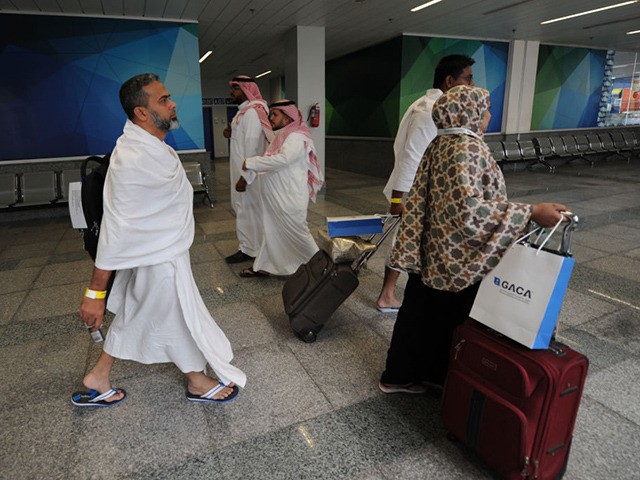The allotment of green cards to foreign nationals arriving from countries listed on President Trump’s travel ban has continued almost unchanged, dropping by less than five percent, since 2017.
In 2017, Trump signed an executive order that put travel restrictions on nationals and residents of Iran, Libya, North Korea, Somalia, Syria, Venezuela, and Yemen.
An extensive review of green card data for Fiscal Years 2017 and 2018, the two years from which data is available post-implementation of the travel ban, reveals the level of green cards given to nationals and residents of the seven original travel ban countries has been reduced only by about 7,200 admissions.
For example, nearly 138,000 green cards were given to native-born Iranians, Libyans, North Koreans, Somalians, Syrians, Venezuelans, and Yemenis and nationals who last lived in those seven countries before securing lawful permanent residence in the U.S.
Compare that to the two last fiscal years of former President Obama’s administration, 2015 and 2016, when more than 145,000 green cards were given to nationals and residents of the seven travel ban countries — indicating a 4.98 percent decrease in green cards given to travel ban foreign nationals before and after Trump’s travel ban was implemented.
The overwhelming majority of the nearly 138,000 travel ban nationals who have been given green cards in the first two years of the Trump administration arrived as chain migrants, refugees, asylees, or on employment-based green cards. Chain migration is the process by which newly naturalized U.S. citizens can bring an unlimited number of foreign relatives to the U.S.
In Fiscal Year 2018, alone, the U.S. gave green cards to more than 16,500 native-born Syrians and nationals whose last residence was Syria. Likewise, nearly 15,500 Iranians and more than 8,000 Somalians were given green cards in Fiscal Year 2018.
A review of nonimmigrant visa records by Breitbart News also found a 15.5 percent reduction in admissions for travel ban nationals between the last two years of the Obama administration and the first two years of Trump’s administration.
In Fiscal Years 2017 and 2018, about 1.2 million travel ban nationals were admitted to the U.S. through nonimmigrant visa categories — almost half of whom were citizens of Venezuela. Compare this to Fiscal Years 2015 and 2016 when Obama approved more than 1.4 million travel ban nationals for admission to the U.S. on nonimmigrant visas.
Specifically, Trump’s travel ban has made a dent in reducing nonimmigrant visa admissions to the U.S. from travel ban countries. For instance, in Fiscal Year 2015, Obama approved nonimmigrant visas for more than 35,000 Iranians. In Fiscal Year 2018, Trump had cut that flow to less than 9,600 admissions — a more than 72 percent reduction.
The same has occurred for nonimmigrant visa admissions from Syria, where Trump has reduced the flow by more than 60 percent since 2015. From Yemen, Trump has reduced the nonimmigrant visa flow by nearly 67 percent since 2015.
Most recently, Trump has expanded his list of travel ban countries this year to include Burma, Eritrea, Kyrgyzstan, Nigeria, Tanzania, and Sudan. From these countries, alone, the U.S. has brought more than 260,000 nationals between 2016 and 2018.
Every year, the U.S. admits about 1.2 million legal immigrants to the U.S. For the 2020 presidential election, about 1-in-10 U.S. voters will have been born in a foreign country. Over the next two decades — should legal immigration levels continue — about eight million foreign-born voters will be added to the American electorate solely through chain migration.
John Binder is a reporter for Breitbart News. Follow him on Twitter at @JxhnBinder.

COMMENTS
Please let us know if you're having issues with commenting.